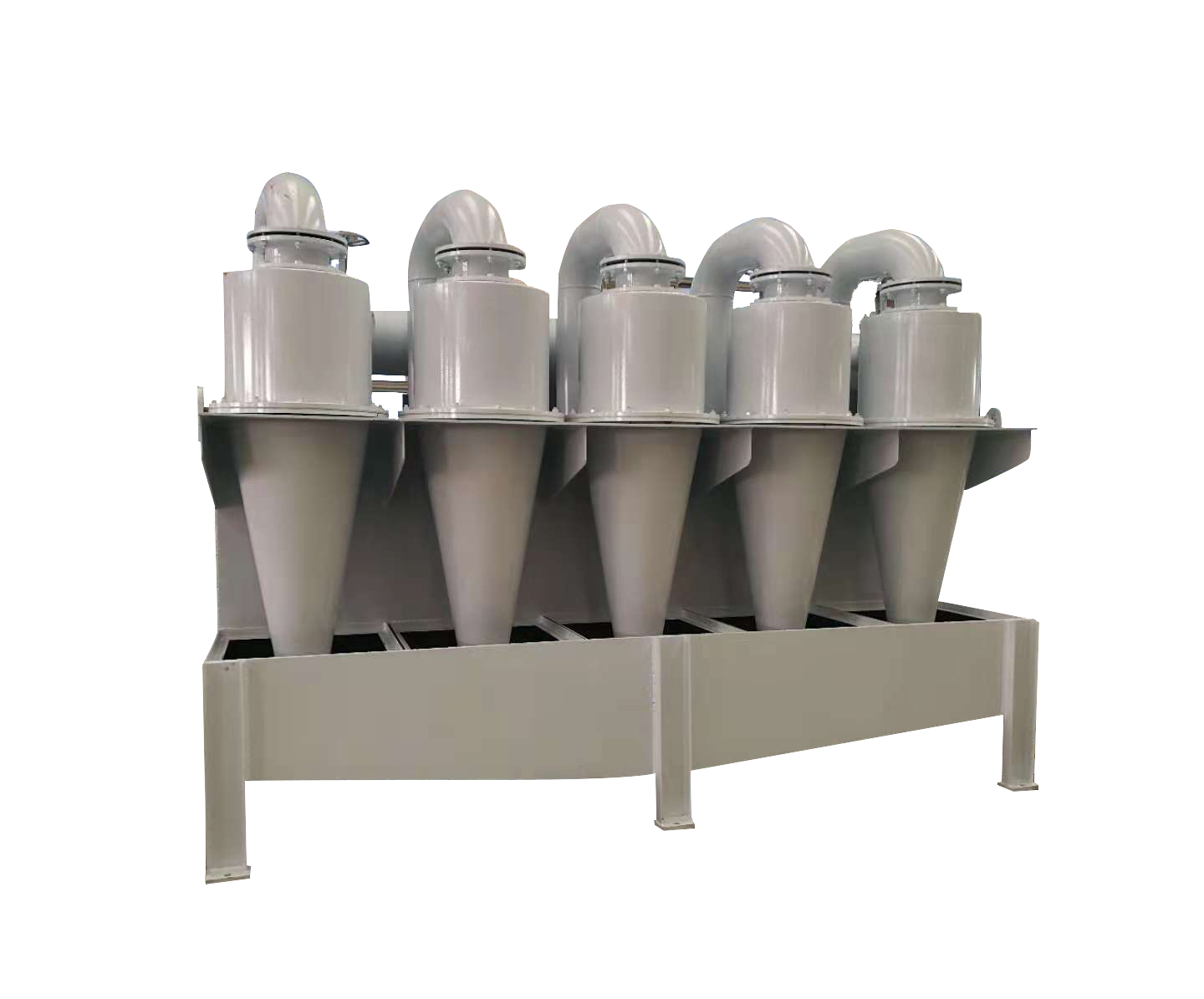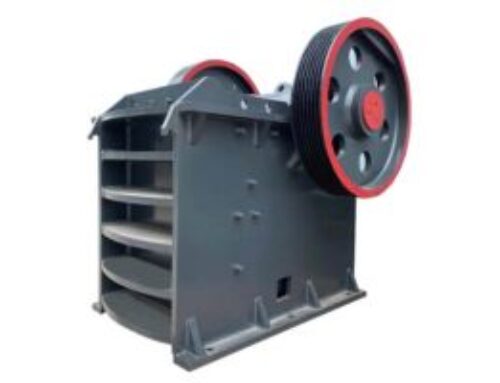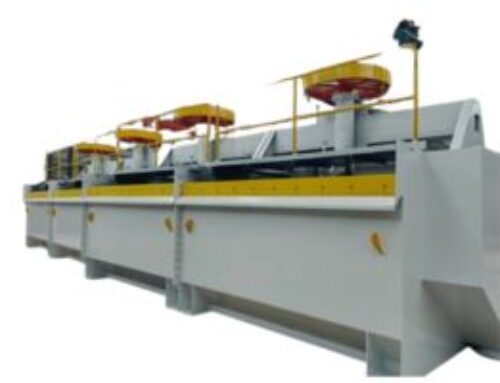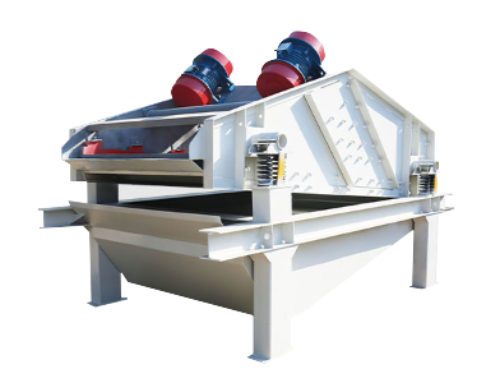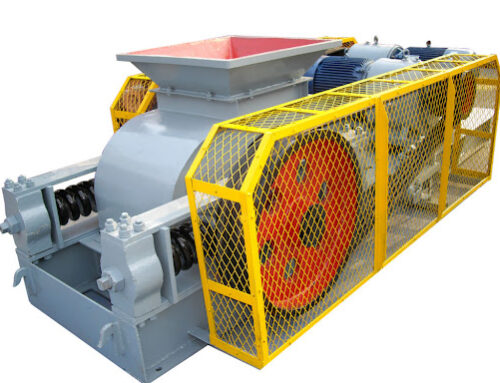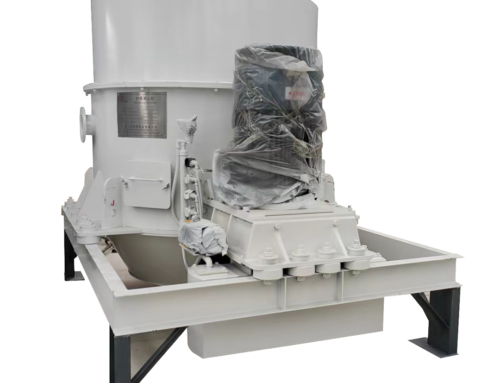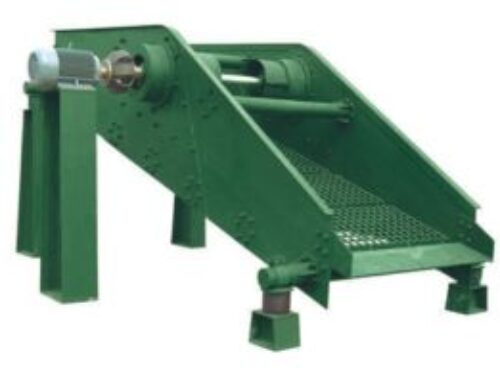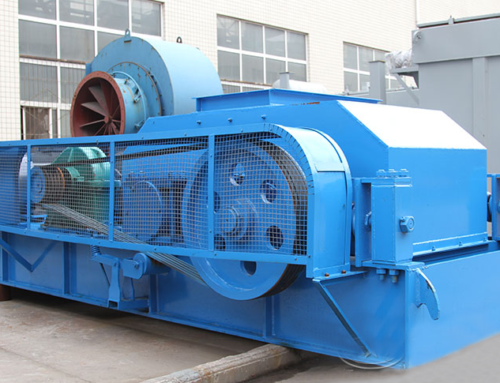What is a hydrocyclone group?
Hydrocyclone group is a system composed of several hydrocyclones according to a certain combination and connection.
Each hydrocyclone itself is a device that uses centrifugal force to achieve solid-liquid separation or separation of particles of different densities and particle sizes. When several such hydrocyclones are combined together, a hydrocyclone group is formed.
In practice, the hydrocyclone group can handle a large amount of materials at the same time, improve the processing efficiency and separation accuracy, and meet the separation needs in large-scale industrial production. Through reasonable configuration and adjustment of the working parameters of each hydrocyclone, effective separation and classification of materials of different properties can be achieved.
Working principle of hydrocyclone group
The operating principle of the hydrocyclone group is based on the centrifugal separation principle of the individual hydrocyclones.
When the mixture to be separated enters the hydrocyclone group tangentially under a certain pressure, a high-speed rotating flow field is formed inside each hydrocyclone.
Under the action of centrifugal force, the solid particles in the mixture will have different trajectories according to their density, particle size and shape.
Denser and larger particles are subject to greater centrifugal force, they are thrown to the inner wall of the cyclone, and spiral downward along the inner wall, and finally discharged from the bottom flow outlet.
The less dense and smaller particles are subjected to less centrifugal force, and they move towards the centre axis of the cyclone, forming an upward internal cyclone, and are discharged from the overflow port.
As it is a hydrocyclone group, multiple hydrocyclones work simultaneously, thus being able to handle larger scale materials and improve the overall separation efficiency and processing capacity. At the same time, by reasonably designing and adjusting the connection method and working parameters of each cyclone in the cyclone group, the separation effect can be further optimised to meet the needs of different processes and production.
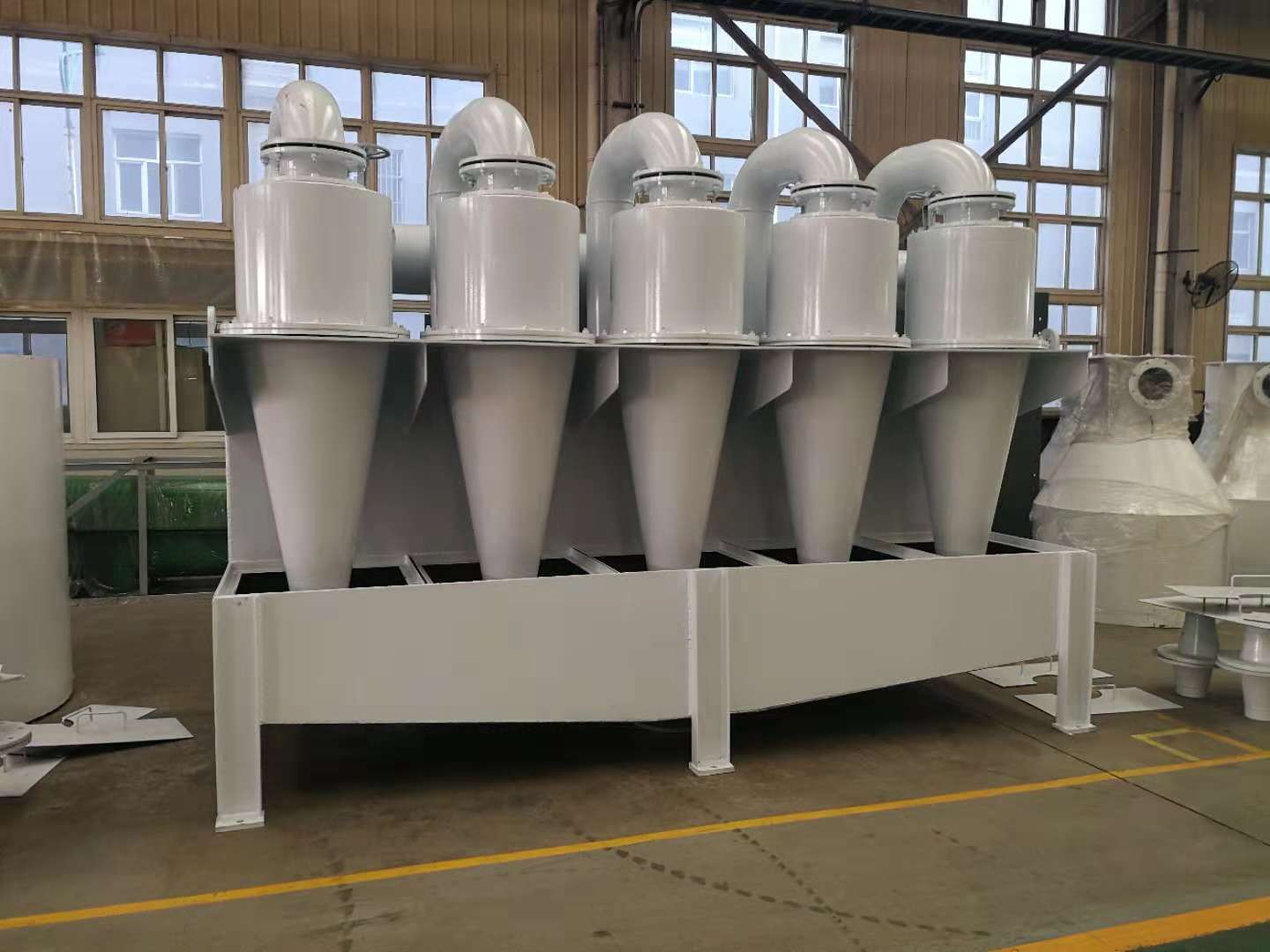
The hydrocyclone group has the following significant advantages:
1.Efficient separation performance: it can quickly and effectively realise the separation between solid particles and liquids, particles of different densities or sizes, and improve production efficiency and product quality.
2.large capacity: multiple hydrocyclone combination work, can handle a large number of materials at the same time, to meet the needs of large-scale industrial production.
3.Compact structure: occupies relatively small space, easy to install and layout in the limited site.
4.Simple operation: the operation process is relatively stable, the operation and maintenance requirements are not high, and it is easy to realise automatic control.
5.High cost-effectiveness: the equipment itself is relatively low cost, and less energy consumption, has a good economy.
6.Strong adaptability: it can adapt to materials of different nature and concentration, and can achieve ideal separation effect in a wide range by adjusting parameters.
7.no moving parts: reduce the probability of mechanical failure, improve the reliability and service life of the equipment.
8.Continuous operation: continuous feeding and discharging can be realised to ensure the continuity and stability of the production process.
9.High grading precision: the materials can be accurately graded according to the particle size or density to meet the strict requirements of different processes on the particle size distribution of materials.
10.Environmental protection and energy saving: it helps to reduce the discharge of waste water and waste residue, reduce the pollution to the environment, and save energy to a certain extent at the same time.
Areas of application for hydrocyclone packages
In many areas of modern industry, hydrocyclone packages have become an indispensable and important piece of equipment with their high efficiency and precise separation capabilities.
In the field of mineral processing, hydrocyclone group plays a key role. It can pre-classify the ore, separate the coarse particles and fine particles effectively, provide more suitable material size distribution for the subsequent beneficiation process, so as to improve the beneficiation efficiency and concentrate grade. In the coal industry, hydrocyclone group is used in the treatment of coal slurry water, to achieve the separation of coal and gangue, and at the same time, the concentration and clarification of coal slurry water, reduce the waste of water resources and environmental pollution.
In petrochemical industry, hydrocyclone group is excellent in oil-water separation and catalyst recovery. It can quickly and efficiently separate oil and water to improve oil quality, while recovering expensive catalysts to reduce production costs. In the field of environmental protection, hydrocyclone group can be used in wastewater treatment, removing suspended and solid particles in the wastewater, so that the wastewater can meet the discharge standard.
The advantages of hydrocyclone group not only lie in its efficient separation performance, but also in its compact structure, small footprint, easy operation and low maintenance cost. Moreover, by reasonably adjusting the structural parameters and operating conditions of the cyclone, it can be adapted to materials of different nature and treatment capacity, with strong flexibility and versatility.
The separation effect of hydrocyclone group is mainly affected by the following factors:
1.Feed characteristics
Feed pressure: The magnitude of the feed pressure directly affects the flow rate and centrifugal force in the cyclone, which in turn affects the separation effect.
Feed concentration: Too high or too low a concentration of solid particles in the feed can adversely affect the separation effect. Too high a concentration may cause particles to interfere with each other, while too low a concentration may reduce the separation efficiency.
Particle size distribution: the wider the range of particle size distribution, the more difficult the separation.
Material viscosity: materials with higher viscosity will reduce the separation effect.
2.Structural parameters of the cyclone group
Diameter and length of the cyclone: the size of the diameter and length will affect the flow field and separation space in the cyclone.
Cone angle: the size of the cone angle affects the particle trajectory and separation effect.
Diameter and insertion depth of overflow pipe and underflow pipe: these parameters determine the flow rate of overflow and underflow and the separation particle size.
3.Operating conditions
Feeding mode: The position and mode of tangential feeding will affect the initial state of the flow field in the cyclone.
Working temperature: Temperature changes may lead to changes in the physical properties of the material, thus affecting the separation effect.
4.Combination of cyclone group
Connections in series or parallel: different connections have different effects on the separation accuracy and capacity.
5.Equipment wear and tear
Long-term operation of the cyclone wall wear, may change the flow field, reduce the separation effect.
6.Material properties
The density, shape and surface properties of the material will have a certain effect on the separation effect.
In summary, in order to obtain the ideal separation effect of hydrocyclone group, it is necessary to comprehensively consider the above multiple factors, and optimise and adjust according to the actual situation.
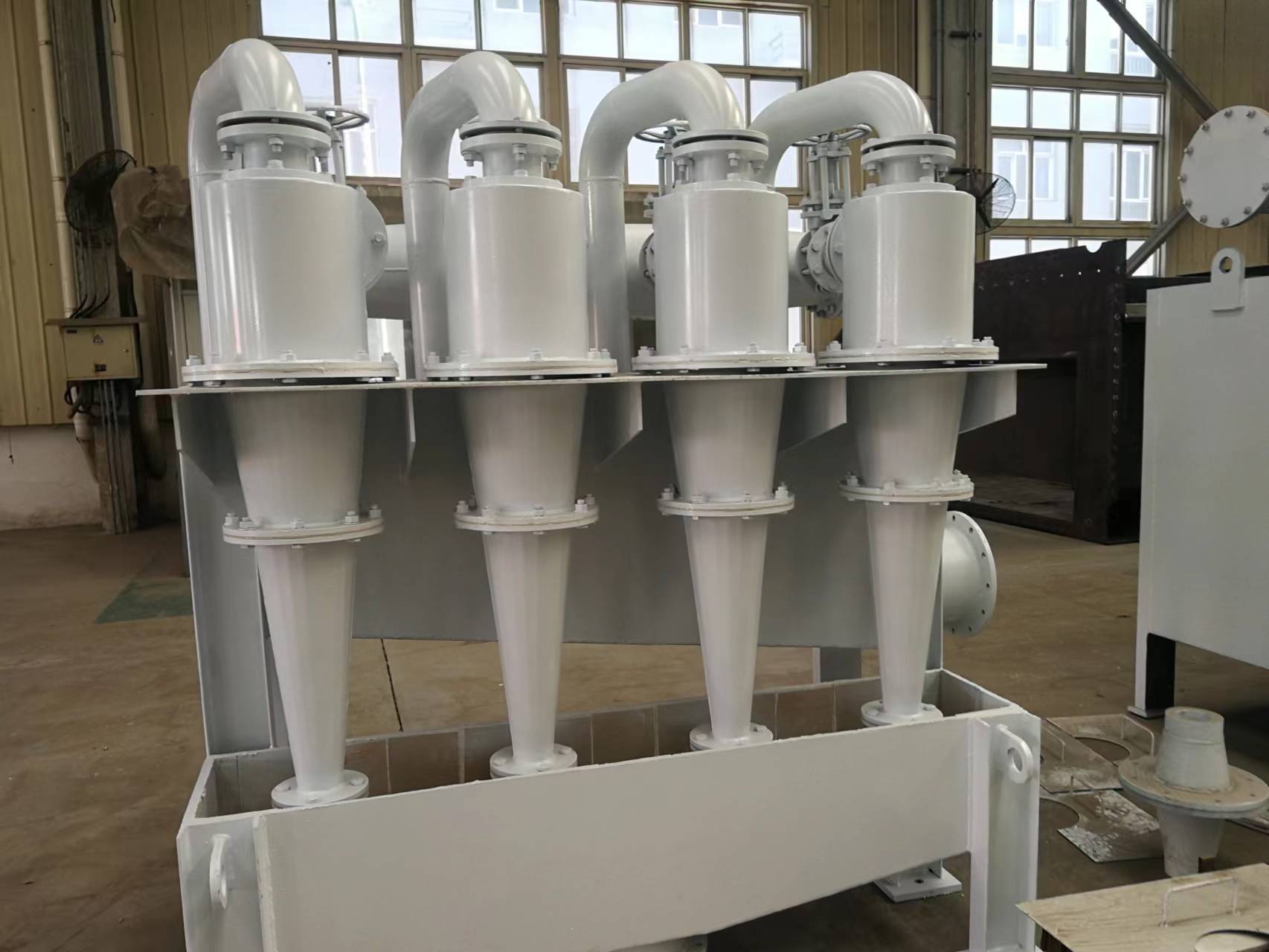
To optimise the operating conditions of the hydrocyclone group, the following aspects can be considered:
1.Feed control
Adjustment of feed pressure: find the optimum range of feed pressure through experimentation and monitoring to ensure that good separation is achieved without excessive increase in energy consumption.
Stabilise feed concentration: Use suitable pre-treatment methods or feed mixing equipment to keep the concentration of solid particles in the feed relatively constant.
2.Monitoring and adjusting the particle size distribution of the feed material
Regularly analyse the particle size of the feed material and adjust the upstream process according to the analysis results in order to control the particle size of the feed material within a reasonable range.
3.Temperature control
If the temperature has a significant effect on the separation effect, install a temperature adjustment device to control the working temperature in the appropriate range.
4.Optimisation of feed
Ensure that the feed material enters the cyclone in a uniform and stable tangential manner to reduce the fluctuation and instability of the feed material.
5.Adjust the operation quantity of cyclone group
According to the actual treatment capacity and separation requirements, flexibly adjust the number of cyclones put into operation to avoid over-treatment or under-treatment.
6.Regular inspection and maintenance
Regularly check the wear and tear of the cyclone, and replace the parts with serious wear and tear in time, in order to maintain a good flow field and separation performance.
7.Establishment of monitoring and feedback system
Install sensors to monitor key parameters in real time, such as feed pressure, flow rate, separation effect, etc., and adjust the operating conditions in time according to the feedback data.
How to choose the most suitable hydrocyclone Group?
1.The volume of slurry to be processed: define the volume of slurry to be processed per hour, which is one of the important bases for selecting the model.
2.Classification size requirements: according to the actual process requirements, to determine the required classification size.
3.Functional requirements of cyclone: consider whether it is used for classification, dewatering, desliming, deslagging or thickening. Different functions of the cyclone in the structure and parameters may be different.
4.material properties: including the density of the material, particle size distribution, shape, as well as the density and viscosity of the liquid. For example, materials with higher density may require a larger diameter cyclone; liquids with higher viscosity may require a specially designed cyclone.
5.The balance of capacity and classification size: the larger the diameter of the cyclone, the larger the capacity, but the overflow size may become coarse. If you require a small classification size and large capacity, you may need to select a number of small cyclones in parallel to form a cyclone group.
6.Ore feeding method: choose the appropriate feeding method according to the actual situation.
Looking into the future, with the continuous progress of industrial technology and the increasing requirements for separation precision and processing efficiency, hydrocyclone group is expected to be applied in a wider range of fields and continue to develop in the direction of intelligence, high efficiency and energy saving. It will continue to provide strong support for the optimisation and upgrading of industrial production and environmental protection, and become an important force in promoting the sustainable development of various industries.
In conclusion, as a kind of high-efficiency separation equipment, hydrocyclone group, with its unique working principle and excellent performance, plays an important role in industrial production, and plays an irreplaceable role in improving resource utilisation, reducing environmental pollution and promoting industrial upgrading.

